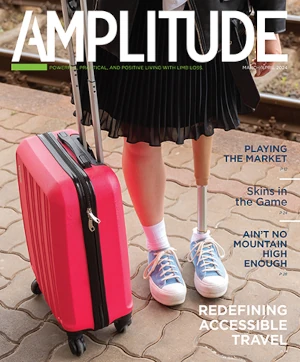
This image shows the colors used in the brain maps: 1) thumb (red); 2) index (yellow); 3) middle (green); 4) ring (blue); and 5) little finger (purple). Image courtesy of Oxford’s Hand and Brain Lab.
Even three decades after hand amputation, the brain maintains an accurate representation of missing fingers, researchers at the University of Oxford (Oxford), England, have found. The finding may have implications for the control of next-generation prosthetics. The results of their work, “Revealing the Neural Fingerprints of a Missing Hand,” were published August 23 in the journal eLIFE.
“We wanted to look at the information underlying brain activity in phantom [limb] movements, to see how it varied from the brain activity of people moving actual hands and fingers,” said team leader Tamar Makin, PhD, an associate professor and Sir Henry Dale Fellow with Oxford’s Centre for Functional MRI of the Brain (FMRIB Centre) and Oxford’s Hand and Brain Lab.
The research team used an ultrahigh-power MRI scanner to look at brain activity in two people who had lost their left hands through amputation 25 and 31 years ago but who still experienced vivid phantom limb sensations, and a control group of 11 people who retained both hands and were right-handed. Each person was asked to move individual fingers on his or her left hand. While there was less brain activity related to the left hand in the subjects with limb loss, the specific patterns making up the composition of the brain’s picture of the hand still matched well to the people in the control group. The researchers confirmed their findings by working with a third subject, who had also experienced a loss of communication between his residual arm and brain. Even this person had a residual representation of his missing hand’s fingers, 31 years after the amputation.
Although these findings provide new insight about the brain’s ability to change, they are compatible with other studies of the brain’s visual cortex that found that degenerative eye disease limiting visual input did not change the brain’s representation of the visual field.
“It seems that even, as previously thought, the brain does carry out reorganization when sensory inputs are lost, it does not erase the original function of a brain area,” said the study leader, Sanne Kikkert, a doctoral student with the FMRIB Centre. “This would remove a barrier to neuroprosthetics…the assumption that a person would lose the brain area that could control the prosthetic. If the brain retains a representation of the individual fingers, this could be exploited to provide the fine-grained control needed.”
Editor’s note: This story was adapted from materials provided by the University of Oxford.



